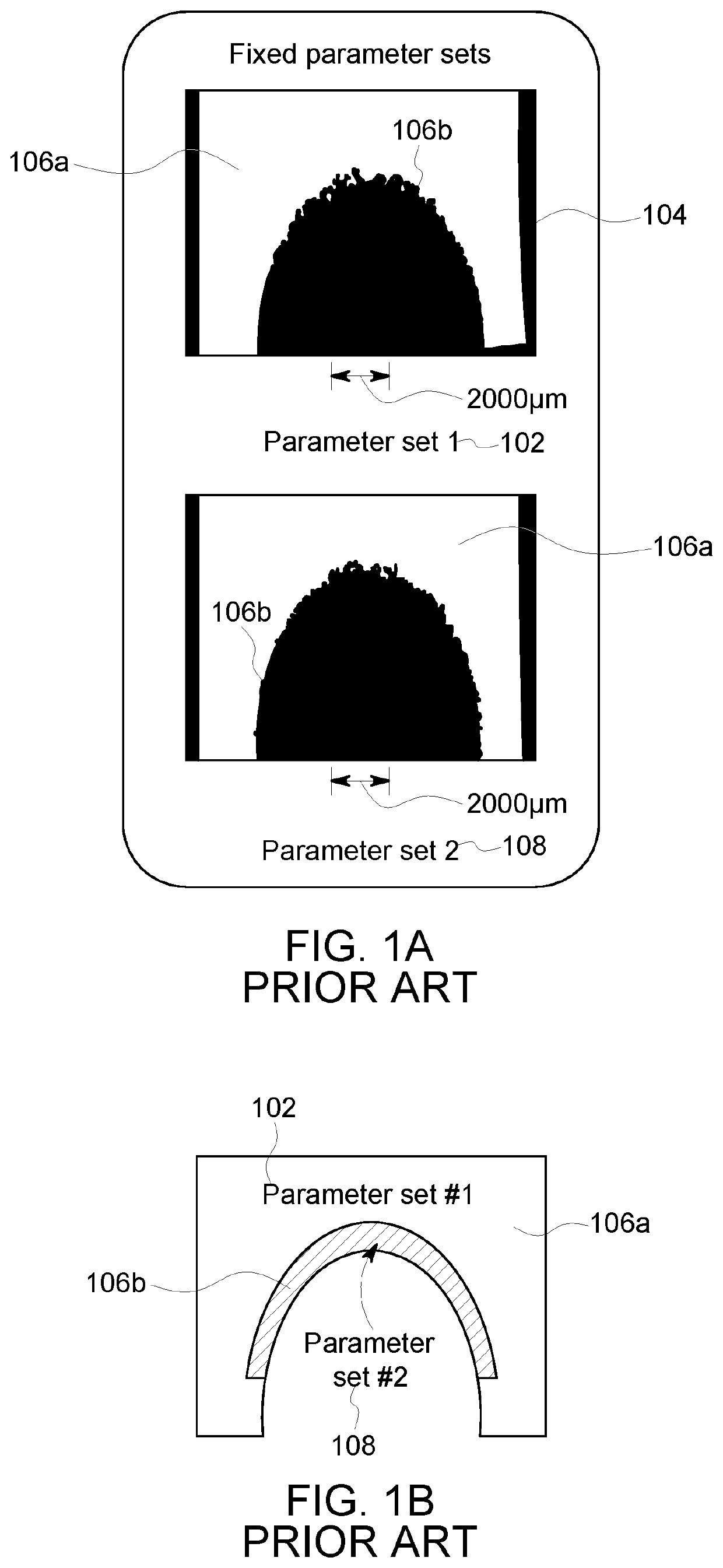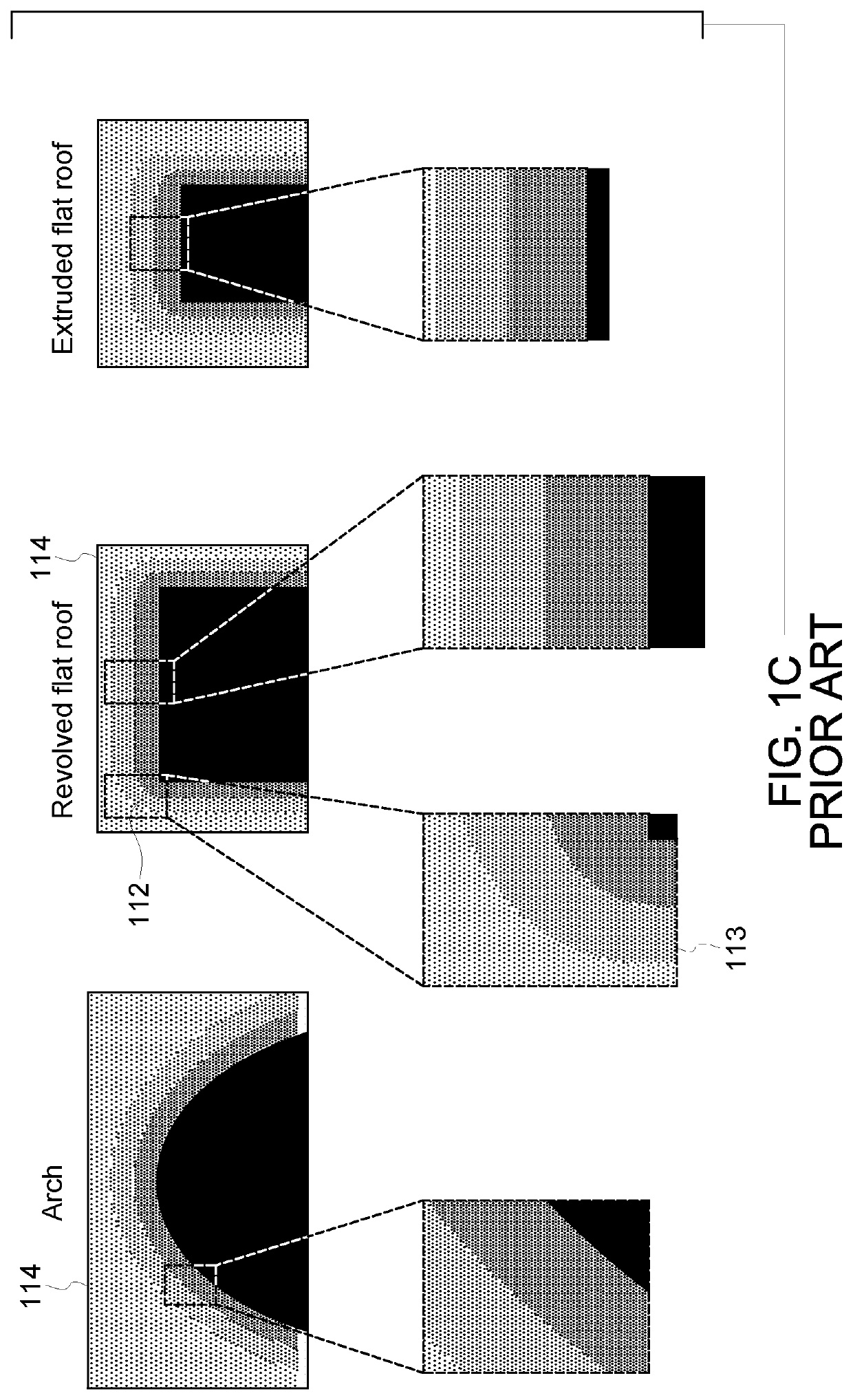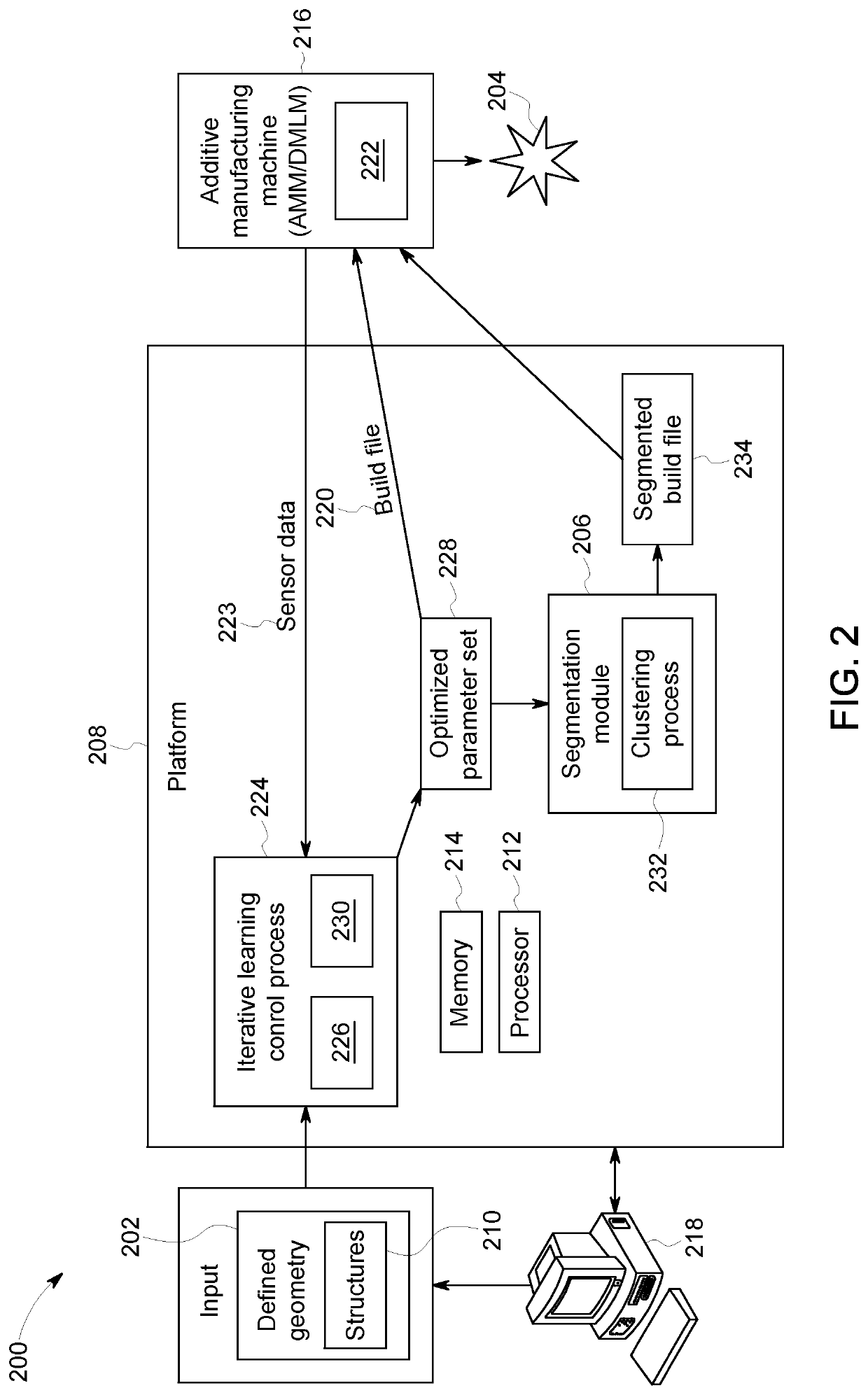Sensor based smart segmentation
a technology of smart segmentation and sensor, applied in adaptive control, program control, instruments, etc., can solve the problems of repetitiveness of geometry in a given region, and achieve the effect of reducing the cycle time for parameter development, reducing the cycle time of process parameters, and small vertical cross section
- Summary
- Abstract
- Description
- Claims
- Application Information
AI Technical Summary
Benefits of technology
Problems solved by technology
Method used
Image
Examples
Embodiment Construction
[0020]In disclosed embodiments, a test coupon (“coupon”) is a representative test sample of the part being manufactured by AM. Coupons may be simple shapes suitable for analysis that contain one or more features and may be representative of the parts being built. The features may include, but are not limited to, bulk, contour, thin-walls, downside (over-hangs of different angles), thru holes (for dimensional tolerances), and upside (top surface of part, dome, etc.).
[0021]In AMM, a part that is ultimately fabricated may include one or more geometric structures (e.g., the above-described “features”). Each of the geometric structures may have different qualities. For example, a bulk region may have a different thermal leakage as compared to a downside of an arch (i.e., over-hang region). As such, using a single fixed parameter set for the fabrication of the part may result in disparities in quality across the part. As a non-exhaustive example of the prior art, shown in FIG. 1A, when a ...
PUM
 Login to View More
Login to View More Abstract
Description
Claims
Application Information
 Login to View More
Login to View More - R&D
- Intellectual Property
- Life Sciences
- Materials
- Tech Scout
- Unparalleled Data Quality
- Higher Quality Content
- 60% Fewer Hallucinations
Browse by: Latest US Patents, China's latest patents, Technical Efficacy Thesaurus, Application Domain, Technology Topic, Popular Technical Reports.
© 2025 PatSnap. All rights reserved.Legal|Privacy policy|Modern Slavery Act Transparency Statement|Sitemap|About US| Contact US: help@patsnap.com



